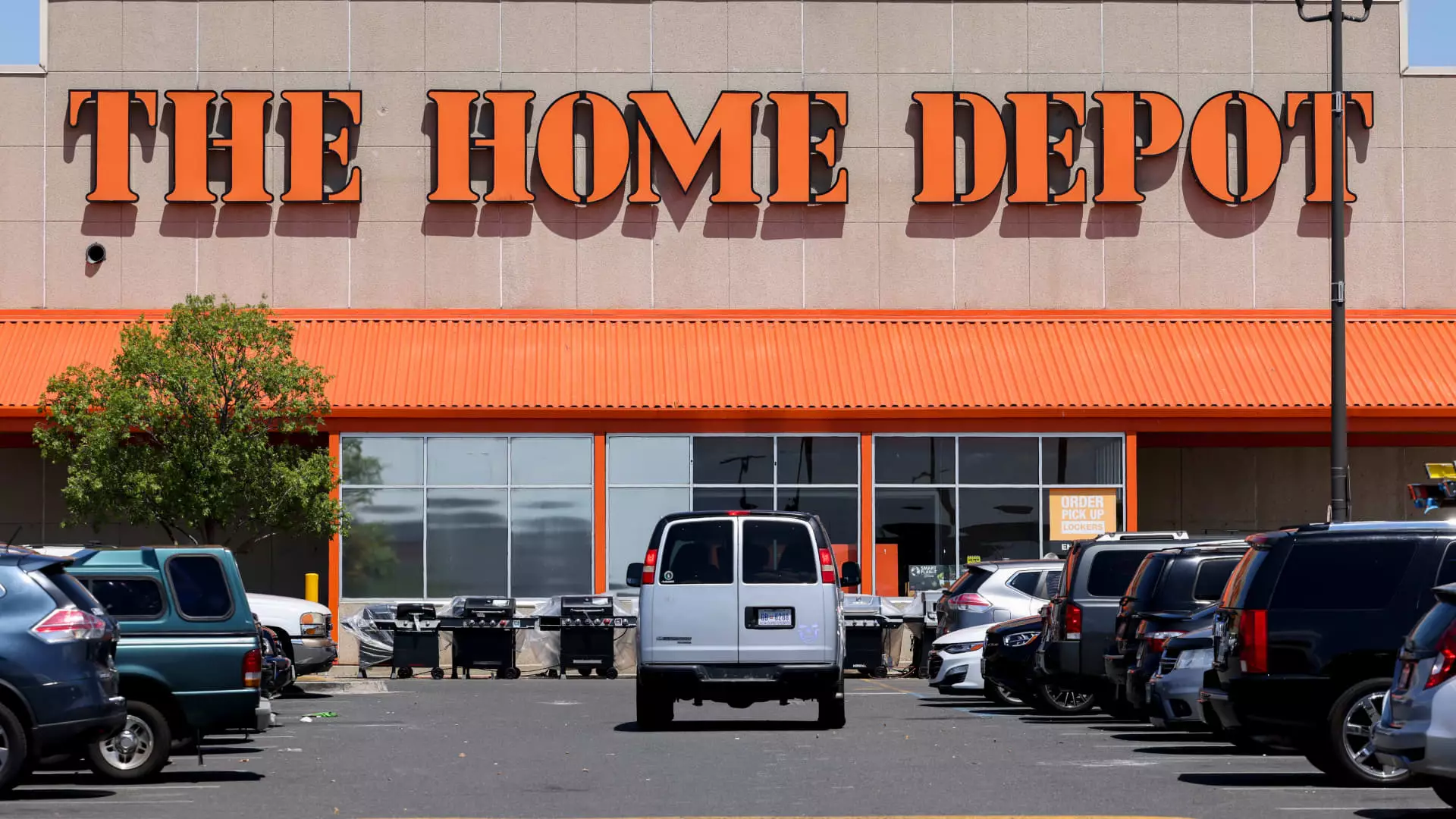The retail sector has been under the magnifying glass of Wall Street analysts, revealing a mixed bag of perspectives on two major players: Home Depot and Best Buy. With the recent market movements, it’s essential to delve into what these fluctuations signify for potential investors, examining the attained growth rates, challenges ahead, and various forecasts that may shape the decisions regarding these retail giants.
In a recent review by the Telsey Advisory Group, Home Depot received an upward revision, transforming its outlook into a “buy-equivalent outperform.” This thumbs-up is a significant signal to investors, especially as it comes in the shadow of projected sales stagnation in the upcoming quarter. This upgrading trajectory highlights the analysts’ confidence in Home Depot’s business fundamentals, which are expected to provide a robust foundation for growth moving into 2025.
The recent price target increase to $455 per share from the previous $360 provides a positive affirmation of the stock’s potential, underscoring an anticipated 14% upside for investors. There are various growth drivers at play here, including lower mortgage rates, recovery from natural disasters, and more favorable comparisons to the extremely high demand experienced during the pandemic.
Despite a projected “continued softness” in Q3 sales, analysts foresee a period of steady growth fueled by a revitalized housing market. The Federal Reserve’s easing of monetary policies has set the stage for cheaper mortgage rates, influencing the demand dynamics in housing and home improvement industries, thus positioning Home Depot as a prime beneficiary of these trends.
The analysts from Telsey emphasized the significance of Home Depot’s professional segment that caters to larger projects, thereby promoting market share expansion. In addition, with housing prices expected to stabilize facilitated by improved economic resilience and moderating inflation, Home Depot is seen as maintaining a competitive edge against the S&P 500 as early as 2025.
Moreover, this upward trajectory becomes even more appealing against a backdrop of broad market performance post-presidential elections, with Home Depot’s stock recently enjoying gains in a more buoyant market environment. Jim Cramer’s advocacy emphasizes that investors should be patient and avoid knee-jerk reactions to upcoming quarterly results—focusing instead on long-term outlooks seems prudent given these forecasts.
Conversely, Best Buy finds itself in a more precarious position. While Citi has maintained a “buy” rating on the stock, it also lowered its price target from $115 to $109, indicating potential headwinds. The looming prospect of tariffs under the new presidential administration poses a near-term threat, particularly because Best Buy’s inventory is heavily reliant on imports from China. The uncertain landscape entails challenges that are likely to affect profitability and pricing structures.
Despite the somber outlook on its stock performance, not all is bleak for Best Buy. The advent of new technology and an ongoing AI-driven replacement cycle are perceived as a bright spot. As consumers become eager to upgrade their electronic devices, the demand for the latest smartphones and computers may provide a buffer against the anticipated decline in sales driven by tariffs.
Best Buy’s performance in a potential post-election environment remains uncertain, especially given the unpredictable effects of fluctuating import tariffs. Even so, the company is well-positioned to benefit should falling interest rates lead to increased consumer activity in home appliance segments—signifying a shared advantage with Home Depot during economic recovery phases.
The contrasting forecasts for Home Depot and Best Buy truly encapsulate the intricacies of the retail landscape. While Home Depot appears to be on a positive trajectory buoyed by strong business fundamentals and myriad growth catalysts, Best Buy faces challenges that require astute navigation.
Investors may find solace in Home Depot’s resilient positioning within a recovering market, whereas Best Buy’s fortunes hinge on broader economic indicators, including government policies that may disrupt supply chains. Understanding these dynamics is critical for anyone considering investments in these two retail behemoths as they prepare for potential market fluctuations in the near to medium-term future.


Leave a Reply